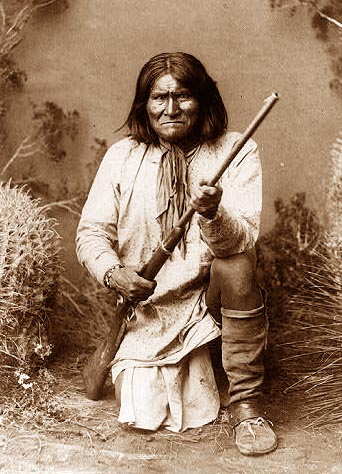The Mechanical Icon
We are pleased to welcome Marshall Poe’s “Mechanical Icon” to NCN. Mechanical Icons is an experiment in historical interpretation and dissemination. Think of it as something like a “book” of video essays that seek to historicize many of those photographs we are all familiar with but probably know very little about. When the site is completed it will have 200 videos. To view the site go here or click on the image of Geronimo. To view the video essay on the famous image of Geronimo above click on the thumbnail of the image on the Mechanical Icon home page.

I am excited to see this resource. I will definitely be using it for my upcoming class(es) in photography & public address/rhetoric. I am preparing an introductory lecture for my Rhetoric & Society course on the images of Sojourner Truth (and the speeches) , so this is a great fit with pedagogical material across the courses I teach. Kudos to Marshall Poe and his project. I look forward to plowing through all of them soon, and hoping a few favorites appear.
Interesting to hear and see his explications about photographs that have mostly been covered elsewhere, and I do like the potential of the video format, but the constant use of the the “ken burns” effect of zooming in and out of the photographs is so annoying that I could only make it through two “essays.”
If anyone uses ‘The Mechanical Icon’ website for classroom discussion or assignments, they should be sure to talk about the how the image is viewed at the site of audiencing, and how the narrator is in full control of where, when, and how one views what part of the image — that is, the viewer has no control over what they can see. Many of the images start as a tightly focused point in some corner or on some detail of the image and then slowly zoom out as the narrator dictates or “reveals” what we’re supposed to see in the image.
Questions that came immediately to mind when I looked at the site were: How might this be different if the image were presented statically while the narrator delivers his interpretation? How does the narrator’s voice-over change the authority of the analysis as opposed to to a block of prose? Why do I feel so uncomfortable with this presentation?
I would argue that the presentation of the materials on the website is more interesting for visual rhetoric than anything the narrator has to say.